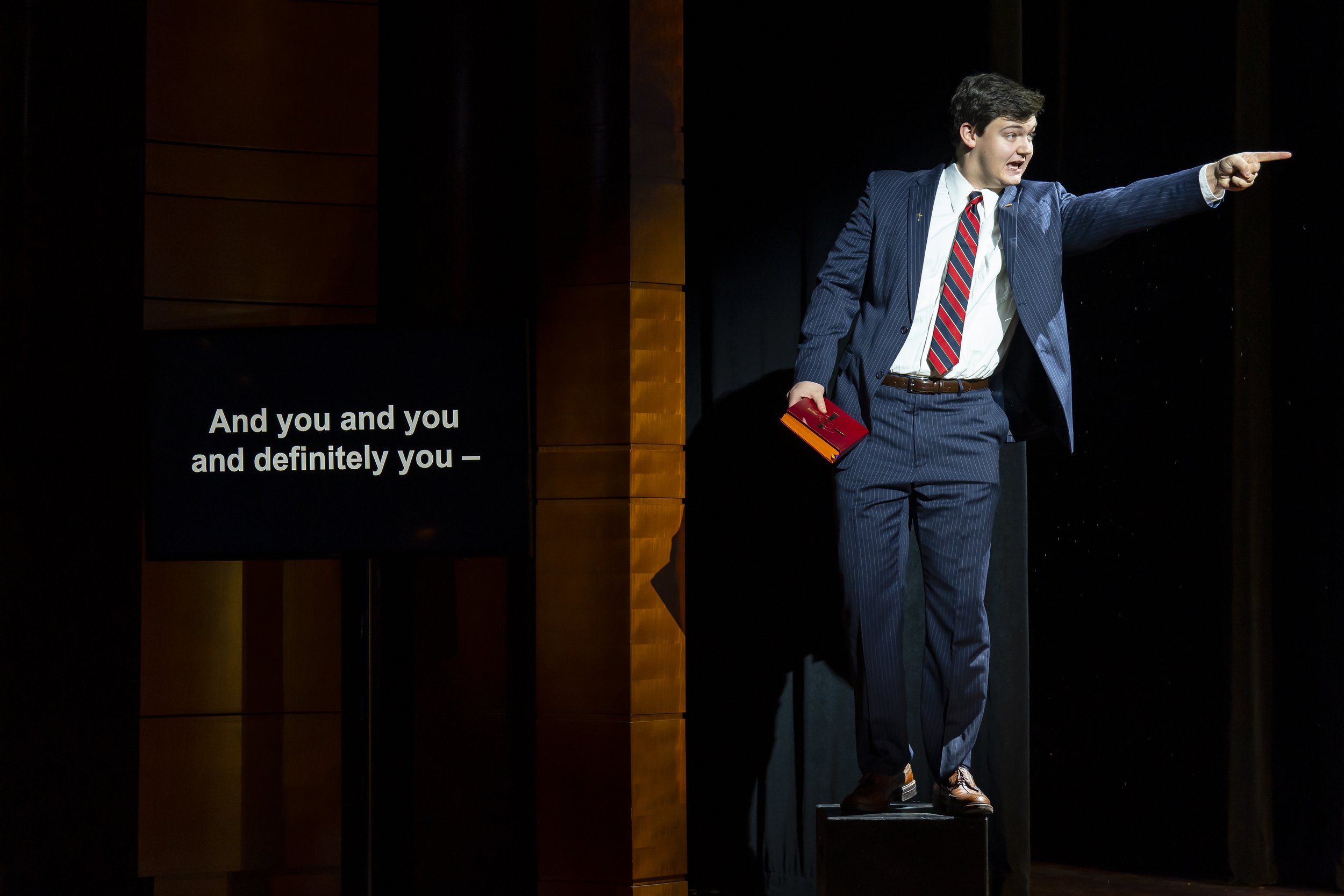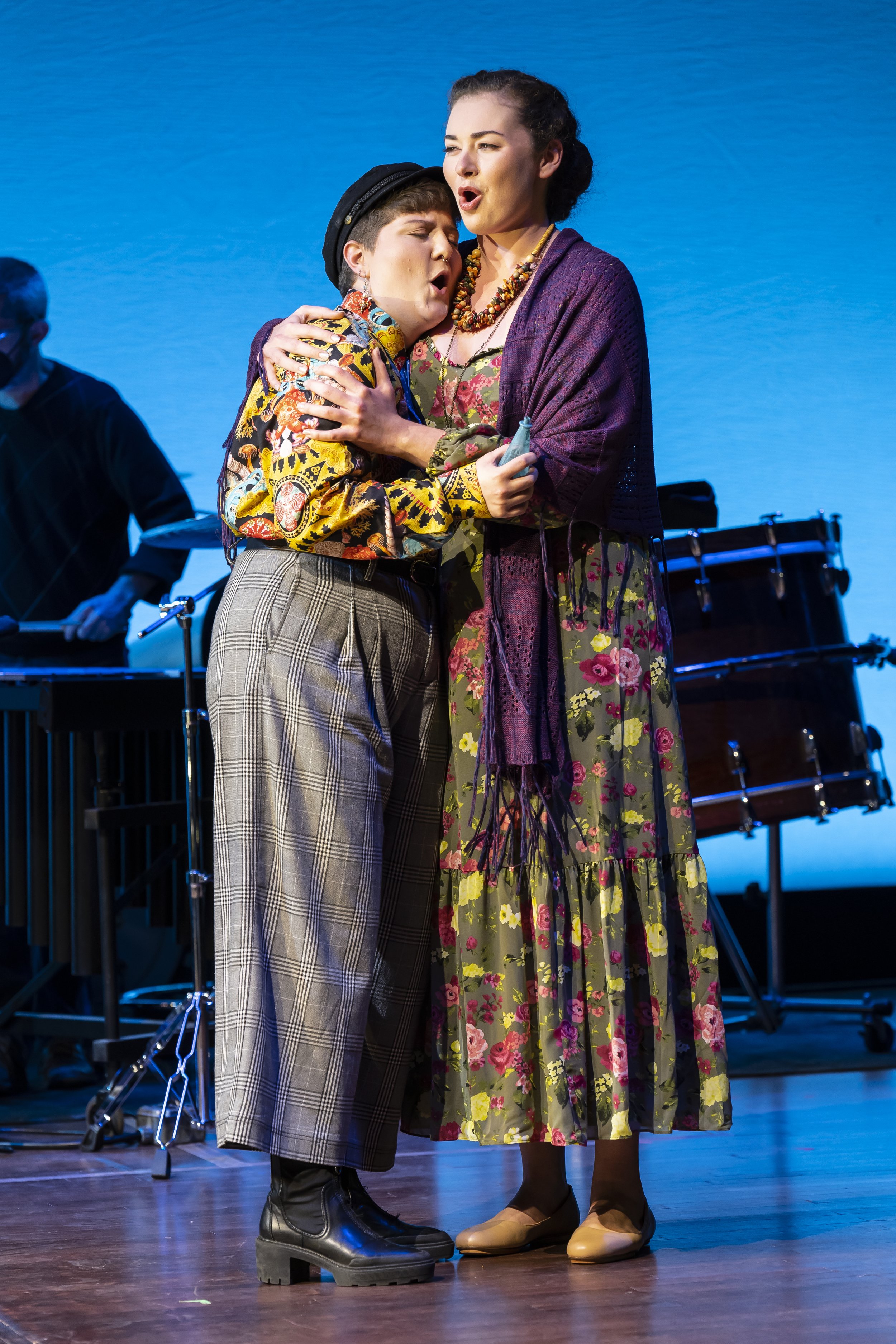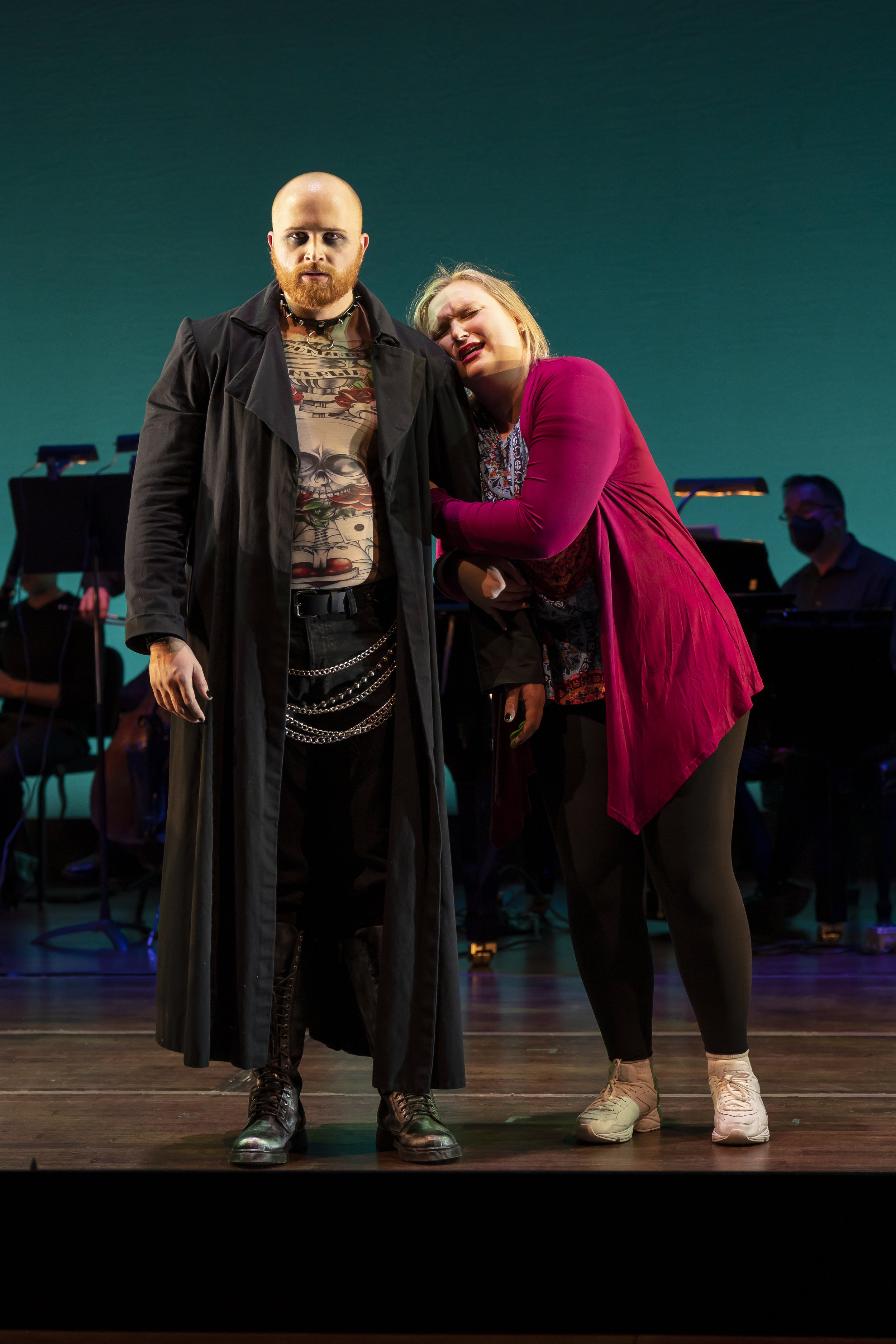The American Opera Initiative’s “Three 20-Minute Operas” is always a highlight of my opera season. Each year since 2012 (paused last year for the presentation of four, new short operas in “Written in Stone”), Washington National Opera provides teams of emerging composers and librettists with the space, resources, and mentors to create new chamber works and have them presented at the Kennedy Center; they also get to interact directly with the singers from WNO’s Cafritz Young Artists Program and the WNO musicians who will be singing and playing their compositions, which benefits the creative artists and the performers. Importantly, this framework also allows emerging creative artists to take risks they might not otherwise be willing to take, both in subject matter and musical compositions. I have been a devoted opera fan for many years now, and the vast majority of operas I have attended have been 100-400 years old and are played in large opera venues insuring large audiences. I love Verdi, Puccini, and Wagner, but it is a refreshing change of pace to see operas that connect to my life in both time and culture as well as in universal themes. AOI annually feeds that hunger, breathing new life into opera by providing new creative artists the chance to grow and develop their skills.
l to r: Kimberly Reed (librettist mentor), Cecelia Raker (librettist, Bubbie and the Demon), Jens Ibsen (composer, Bubbie and the Demon), Walken Schweigert (librettist, What the Spirits Show), Carlos Simon (composer mentor), Silen Wellington (composer, What the Spirits Show), B.E. Boykin (composer, Oshun), Jarrod Lee (librettist Oshun), Kelley Rourke (librettist mentor and AOI Artistic Advisor). Photo by Caitlin Oldham; courtesy of Washington National Opera..
This year’s group of three were presented in two showings Saturday night in KC’s Terrace Theater. I attended the 7 pm showing which was sold out; a 9 pm showing followed. The singers were from WNO’s Cafritz Young Artist Program, and each work was accompanied by a 13-piece ensemble from the Washington National Opera Orchestra led by WNO’s Conductor Evan Rogister. The operas were semi-staged with the singers in costume aided with a few props. Each opera was preceded by a film clip featuring comments by the creative artists and their mentors. The 20-minute operas were:
Oshun
composer: B.E. Boykin
librettist: Jarrod Lee
What the Spirits Show
composer: Silen Wellington
librettist: Walken Schweigert
Bubbie and the Demon
composer: Jens Ibsen
librettist: Cecelia Raker
Mentors to composers: Carlos Simon and Evan Rogister
Mentors to the librettists: Kimberly Reed and Kelley Rourke
Oshun’s plot included aspects of the Yoruba religion of West Africa which has both a supreme being and lesser gods known as Orishas, both male and female. The costumes had colorful African themes, and the music included drums and rhythmic singing. The libretto featured both English and words from the Yoruba language. The role of the Supreme Being, Olodumare, was sung by bass-baritone Christian Simmons. Failing to sway Olodumare to bring rain and relieve the drought was Shango, Orisha of Thunder, sung by baritone Daniel Smith. Pushing him in this effort was Esu, a supplicant, sung by tenor Anthony P. Ballard. When they fail, they call on Oshun, sung by soprano Katerina Burton, to use her beauty to influence Oludamare, but on the path Oshun loses her beauty and thus her confidence and hope. Suffering through this despair, she is told by Oludamare that her beauty and power was still there; it always had been what was inside her, and he provided rain. This was a feel-good story of self-empowerment. It was also a story accompanied by beautiful music and lovely singing. Ms. Burton was again a standout in her performances with WNO.
l to r: Christian Simmons as Olodumare, Daniel Smith as Shango, Katerina Burton as Oshun, and Anthony P. Ballard as Esu. Photo by Scott Suchman; courtesy of Washington National Opera.
What the Spirits Show was a hard-edged drama, most obviously targeting transgender prejudice and oppression, which also can be viewed as a more general call to see the beauty in letting everyone be who they really are. The story centers on teenage artist Calamus played by mezzo-soprano Mack Wolz; they are able to shapeshift their body using a magic elixir “expressing their true spirit by bending into different forms and offering the poetry of transformation”. A politician who weaponizes religion to force conformity on Calamus is played by baritone Justin Burgess. He causes Calamus to be incarcerated and be denied access to the elixir. Calamus begins to lose their identity. Buoyed by the love of their parent Aurora, played by mezzo-soprano Hanna Shea and their friend Sylvan, played by contralto Cecelia McKinley, Calamus hung on while their spirit was receding. With great courage and determination, Sylvan sneaks a dose of the magic elixir into the prison, and Calamus, drinking the potion, transforms into their true poetic identity, and the walls come down as their beauty fills the stage. The music under girded the intense drama, and vocal performances were well done by everyone.
left photo: Cecelia McKinley as Sylvan and Mack Wolz as Calamus. middle photo: Justin Burgess as the Politician. right photo: Mack Wolz as Calamus and Hannah Shea as Aurora. Photos by Scott Suchman; courtesy of Washington National Opera.
Bubbie and the Demon turned out to be a comedy based on a clever premise, and it was very funny! Maybe composer Ibsen and librettist Raker could approach Netflix about making an operatic version of The Addams Family. In a second turn on the stage, contralto Cecelia McKinley plays the elderly granny in a night robe, isolated by a pandemic, who in filling out a crossword puzzle online stumbles onto an incantation that summons a threatening figure from the dark side. The Demon intends ill for Bubbie, but she believes him to be her goth grandson come for a visit and treats him with love and respect. A neighbor Karen, played by Teresa Perrotta, comes in to assist Bubbie with her computer problem, and is shocked to find the demon there; she tries but fails to get Bubbie to see what she is actually dealing with. Eventually the Demon is softened and then won over by Bubbie’s kind and loving treatment. Three characters were each given their own musical style, and the singing, music, and acting by all worked together to provide the audience with delight.
left photo: Jonathon Patton as the Demon and Cecelia McKinley as Bubbie. right photo: Jonathon Patton as the Demon and Teresa Perrotta as Karen. Photos by Scott Suchman; courtesy of Washington National Opera.
The comedic portrayal of a dark force is naturally funny; the audience needs to laugh to relieve the tension created by such a figure. However, one reason that Bubbie and the Demon is so funny is that the audience can identify with these circumstances, such as the loneliness enforced by the pandemic, the stress of modern parenting, and the impact of social media on our lives. We may not recognize what’s off in the exchange between a peasant and a nobleman, but we easily sense the frustration when a computer freezes up and the relief when help arrives. Modern times and contemporary issues readily connect with modern audiences. Finding the underlying beauty in those situations is what makes opera great. Revealing the true hearts of Bubbie and the Demon is how opera is elevated to art.
As a thought experiment, how early in human history could What the Spirits Show have been created and produced? Verdi, Puccini, and Wagner would not have tried; the general public and rulers would have all stood in their way. Strauss, Britten, or Glass? Ever hear of the “lavender scare” of the 1950s? My point is not to comment on social issues here, but to make the point that composing cutting opera today requires courage from creative artists and opera companies as it always has; Puccini and Verdi had to battle censors and royalty to tell human stories. Contemporary opera is needed to respond to modern needs and opportunities to contribute to wholeness. Thank you, AOI.
The Fan Experience: This year’s Three 20-Minute Operas were presented in two showings, one at 7 pm and one following at 9 pm on Saturday, January 23 in the Kennedy Center’s Terrace Theater. My experience is that these frequently sell out. The audience included the composers and librettists, and cheering fans. Get your tickets as early as possible for next year’s event.
I would like to watch these works again to get a better appreciation for both the music and the vocals now that I know the stories. It seems unlikely to happen in this area any time soon. During the COVID pandemic, when live performances before audiences were not possible, WNO filmed the 2021 edition of Three 20-Minute Operas and placed them online for viewing. I have learned that this year’s operas have been recorded for archiving. I suspect contractual arrangements might be limiting, but I’d love for WNO to make these available online if possible and to make this a regular practice. Just a wish.







